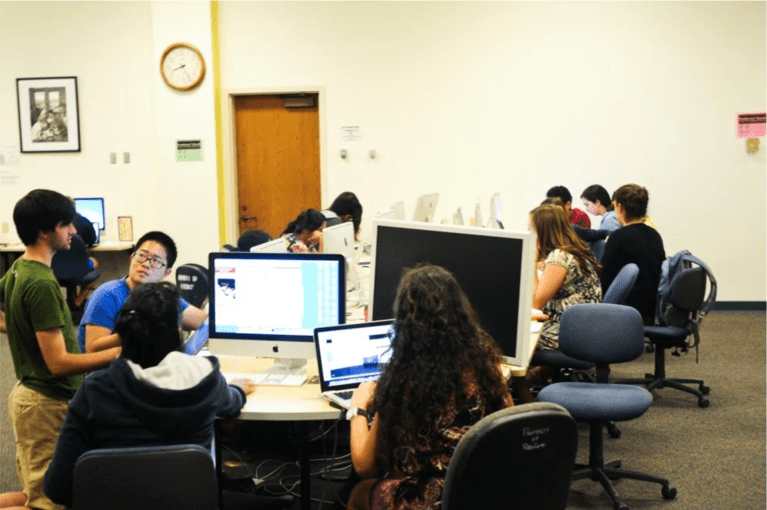The computer science department announced earlier this quarter that it would be offering a free course called CS 106A: “Code in Place,” marketed as a way to teach people around the world the first half of one of Stanford’s most popular courses, CS 106A: “Programming Methodology.”
Code in Place involves small group meetings with members of the teaching team, weekly lectures and four assignments over a five-week period from April 13 to May 22.
Learners with no prior coding experience were asked to apply via an application portal and complete an exercise. More than 80,000 people started an application for the course, according to the Code in Place website.
Stanford students who have coding experience are among the volunteer section leaders.
Roshan Swaroop ’23 is currently “teaching from his bedroom in sunny Huntington Beach, Calif. every Wednesday at 4 p.m. PDT,” he said.
Like most Stanford undergraduate volunteer section leaders, Swaroop took Programming Methodology in a previous quarter and is now able to teach Code in Place remotely.
“I’d say the section leading community has been a really fascinating group to be a part of,” Swaroop said. “I believe there’s around 800 of us or so from all different walks of life, from major companies like Google to freshmen at universities spanning the globe.”
Other members of the teaching team, taking the opportunity to help spread their love of computer science, have expressed similar sentiments.
The original Code in Place website called the course “a one-time offering for the COVID-19 pandemic” primarily as a way to give back, and said that students who are accepted into the course should plan to dedicate 15 to 20 hours for lectures, section and assignments each week.
Jaime Park ’23 from the University of California, Irvine, is one student in the course. While section leaders are not required to put in time beyond their training and section, Park said they are often very active on the Ed forum, an educational tool for students to get their CS questions answered.
“I find it encouraging and inspiring that I can connect with other students from numerous countries through the Ed forum,” Park said.
Lecturer Chris Piech ’10 M.S. ’11 Ph.D. ’16, one of the primary instructors for Code in Place, described coding as an “interdisciplinary skill, much like writing.”
While coding can be a difficult task for new students, the course staff is doing everything it can to ensure students are learning as much as possible, according to Piech. The other primary instructor of the course is longtime Programming Methodology instructor Mehran Sahami ’92 M.A. ’93 Ph.D. ’99.
“The collective suffering that we are all going through is very real — there are folks who are losing jobs, and younger students who are more uncertain about their future than ever,” Piech said. “The one thing I have to offer is the ability to teach.”
Teaching a free course to thousands of people across the world, Piech hopes to maximize the positive impact he has during the ongoing COVID-19 pandemic. Students, in turn, can use the course to help maximize their time spent at home.
“I’ve always been interested in coding, but I was hesitant on where to start,” Park said. “CS 106A: ‘Code in Place’ was perfect as it didn’t bind me to a strict schedule nor was it a paid class.”
Park said she is having a great time taking the course. She watches lectures online three times a week and has one 40-minute section each week.
“Some lectures can be difficult to follow, but only due to length and time constraints,” Park said.
Coding “can be hard,” Piech said, “but at the end of the day it provides joyful satisfaction of creating something new, that is a feeling that I think many of us around the world are going to need a dose of.”
Contact Jenna Ruzekowicz at jruzekow ‘at’ stanford.edu.
